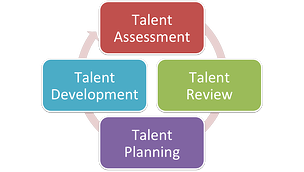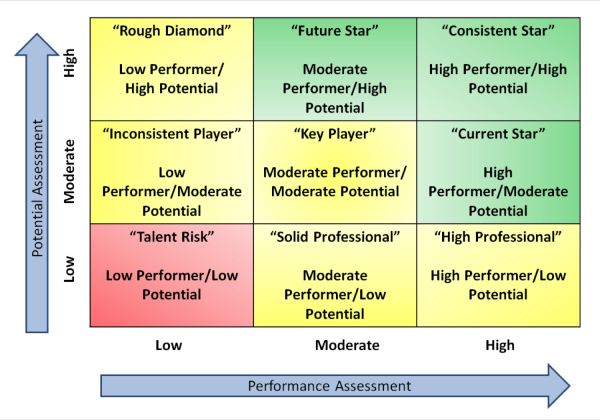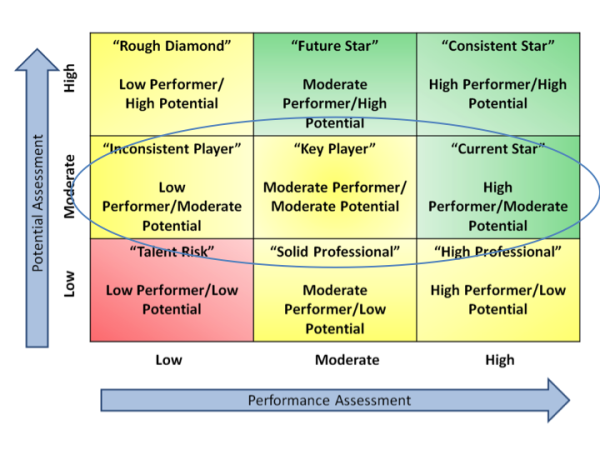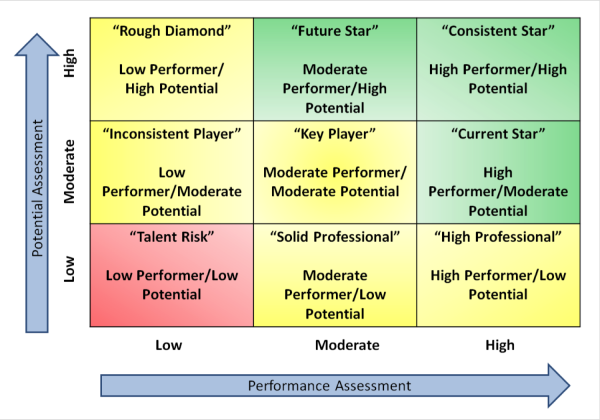Development at the Top - Use the 9 Box to Develop Talent in Succession Planning
Use the 9 Box to Develop Talent in Succession Planning, Part 1: Development at the Top
My colleagues and I have written about the usefulness of the 9 box grid in the succession planning process. The structure and visual appeal of the 3 x 3 grid can help leaders evaluate talent in the Talent Assessment process, as well as guide Talent Review discussions. The usefulness of the 9 box grid extends beyond these first two phases of the succession planning process, providing guidance and direction to Talent Planning and on-going Talent Development.
usefulness of the 9 box grid in the succession planning process. The structure and visual appeal of the 3 x 3 grid can help leaders evaluate talent in the Talent Assessment process, as well as guide Talent Review discussions. The usefulness of the 9 box grid extends beyond these first two phases of the succession planning process, providing guidance and direction to Talent Planning and on-going Talent Development.
Part 1 of Use the 9 Box to Development Talent in Succession Planning will focus on development at the top of the 9 box grid - the development of individuals determined to be High Potential.

Using both a rating of Potential and a rating of Performance helps to recognize the difference between these two concepts. Not all Hi Pos are high performers; Hi Pos have differing development needs.
High Potential - High Performer
Typically, individuals in the top right box:
- Deliver consistently strong performance and outstanding results in a wide variety of challenging settings
- Drive to succeed and make a contribution through increasingly greater assignments, opportunities, and roles
- Seek out new experiences, learn quickly, and apply lessons learned to challenging situations
- Demonstrate technical, professional, managerial, and leadership skills that are expected at the next organizational level.
Development of these individuals should be aimed at challenging them - yet watching for signs of burnout or retention risk.
- Keep them in key roles with high visibility, exposure, and strong accountability
- Provide assignments with:
- company-wide exposure
- opportunity to turnaround struggling project or business area, or start-up something new
- new or broader P&L responsibilities
- Offer access to exclusive, strategic training opportunities
- Assign to senior level mentor, and provide an opportunity to mentor others
- Ensure both short- and long-term advancement opportunities
High Potential - Moderate Performer
In most cases, individuals at this level:
- Deliver average performance and results, occasionally exceeding expectations for his/her current position
- Exhibit initiative through pursuit of bigger challenges and opportunities
- Seek out new experiences, and learn quickly and apply lessons learned to address new, tough, or unusual challenges.
- Demonstrate technical, professional, managerial, and/or leadership skills that are high for current organizational level
Development of these individuals should include challenge, but also be aimed at maximizing performance.
- Focus development on specific competency or skill gaps to move from moderate to high performance
- Provide assignments with:
- significant variety and intensity
- company-wide or cross-functional exposure
- Provide opportunity to mentor others
- Prepare for long-term advancement
High Potential - Low Performance
Assigning an individual to this category may seem strange. However, we often find young leaders who have moved up the ranks quickly in this situation, or individuals who are no longer a fit for their role. They are struggling in their role yet continue to demonstrate potential. Typically, they:
- Deliver a low to moderate level of performance and results in assignments and responsibilities
- Demonstrate initiative and drive to enhance success of own area, although may lack sufficient familiarity with job and its requirements
- Open to and learn quickly from experience; apply lessons learned to new, different, challenging situations
- Lack or are still learning the technical, professional, managerial, and/or leadership skills needed for current role
Development must first focus on determining the root cause of performance gaps and targeting all efforts to improve performance.
- Carefully compare job requirements with the individual's skills, capabilities and interests
- Provide coaching to enhance performance long-term
- Assign mentor/coach with strong skills in areas of weakness
- Consider an assignment to build specialized skills
- Monitor regularly to evaluate for performance improvement and re-assess potential
Share this
You May Also Like
These Related Stories

Developing Future Promise - Use the 9 Box to Develop Talent in Succession Planning

Limited Potential Does Not Limit Options - Use the 9 Box to Develop Talent in Succession Planning



